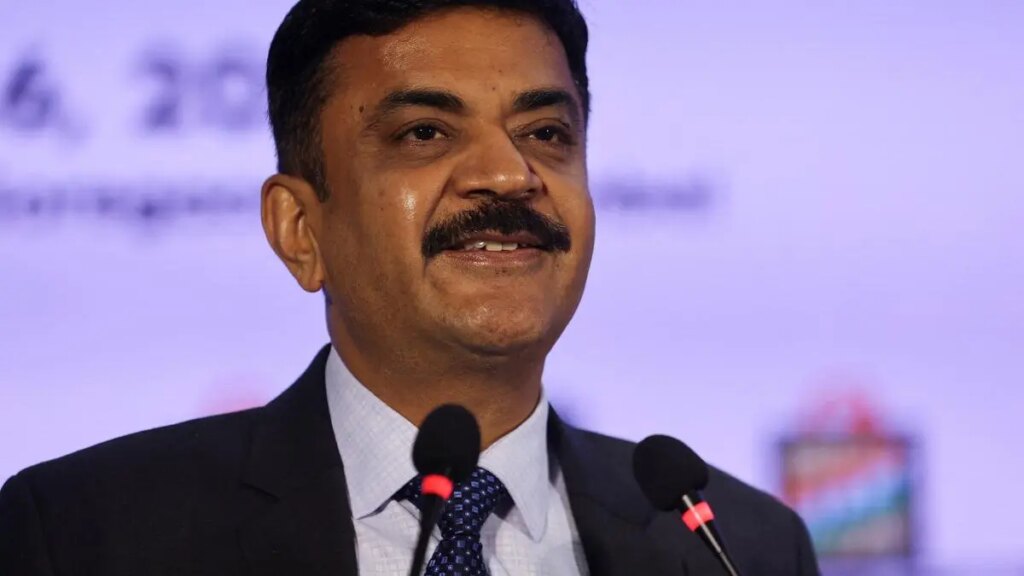
Govt working on sops for steel companies to adopt green tech
Green Steel Incentives: Government Plans Support for India’s Steel Industry Decarbonization
Table of Contents
Steel Secretary Sandeep Poundrik discusses new green steel incentives at the India Steel 2025 conference. (Photo Credit: REUTERS)
Introduction to Green Steel Incentives
The Indian government is developing a comprehensive package of green steel incentives to support the steel industry’s transition toward lower carbon emissions, Steel Secretary Sandeep Poundrik announced on Friday. Speaking at the ‘India Steel 2025’ conference, Poundrik outlined the government’s mission to decarbonize one of India’s most polluting industrial sectors through targeted financial support and new procurement mandates.
The green steel incentives are designed to encourage steel companies to adopt environmentally friendly production methods and technologies that significantly reduce carbon emissions. This initiative comes as part of India’s broader commitment to reducing industrial carbon footprints while maintaining economic growth in key manufacturing sectors.
Key Announcement Highlights
The green steel incentives package will include:
- Production incentives for low-carbon steel manufacturing
- Support for renewable power usage in steel production
- Mandatory procurement of green steel in government projects
- Special focus on helping small-scale producers adopt cleaner technologies
India’s Mission to Decarbonize Steel Production
“We are working on a mission on green steel and will try to support the industry for decarbonisation in terms of incentives for producing more green or less carbon-emitting steel,” Poundrik explained during his address. The government’s approach recognizes the significant challenges faced by the industry while offering practical solutions tailored to India’s specific circumstances.
The green steel incentives will primarily focus on supporting the adoption of renewable power sources in steel production and similar components that can reduce the carbon intensity of manufacturing processes. “The programme is under work and hopefully it will soon be approved by the government,” Poundrik added, suggesting that the formal announcement of the incentive structure may be imminent.
According to the government’s definition, green steel is steel that emits less than 1.6 tonnes of carbon per tonne produced. This differs from European standards, which primarily consider steel made through scrap recycling in electric arc furnaces as green steel. The distinction is important because India’s approach to green steel incentives must account for the country’s limited domestic scrap availability.
Mandatory Green Steel Procurement Policy
Complementing the production incentives for green steel manufacturing, the government is also developing a mandatory procurement policy that will require government entities and government-sponsored projects to use a specified percentage of green steel. This policy builds on the existing mandate that government projects must use domestically produced steel.
“In the same way, there will be a mandate for government companies and projects to use a certain percentage of green steel. Both these proposals will be approved soon,” Poundrik confirmed. This procurement policy represents a crucial demand-side intervention that will help create a sustainable market for green steel products in India.
Green Steel Definitions and Standards
Different regions have varying definitions of what qualifies as “green steel”:
- India: Steel that emits less than 1.6 tonnes of carbon per tonne produced
- Europe: Primarily focuses on steel produced from recycled scrap in electric arc furnaces
- Global: Standards are still evolving, with some emphasizing production methods while others focus on total emissions
Challenges in Green Steel Production
Despite the promising green steel incentives, India faces several unique challenges in its decarbonization journey. Last year, India generated only 25 million tonnes of steel scrap, far below what would be required to significantly shift production methods toward recycling-based approaches that are common in Europe.
Another alternative pathway to greener steel production is using Direct Reduced Iron (DRI), but this approach faces economic hurdles in the Indian context. “It is not viable till India has domestic gas supply or availability of hydrogen below $2 from the current level of $5-$6,” explained Poundrik. Additionally, the iron content in Indian ore is generally lower than optimal for efficient DRI processes.
To address these geographic and resource constraints, the government has been encouraging Indian companies to explore setting up DRI plants in regions like West Asia and Australia, where natural gas is more readily available. This strategic approach allows Indian steel manufacturers to benefit from green steel incentives while navigating the practical limitations of domestic production.
Support for Small-Scale Steel Producers
Perhaps the most significant challenge in implementing green steel incentives effectively is engaging India’s numerous small-scale secondary steel producers. These companies represent approximately 45% of the country’s steel production capacity and frequently use cold DRI processes that emit higher levels of carbon.
“It is a big challenge to incentivise the small producers to adopt green technology for steel making,” acknowledged Poundrik. The government’s incentive structure will need to be carefully calibrated to ensure these smaller operators can participate in the transition without facing insurmountable financial burdens.
Government’s Pragmatic Approach
The green steel incentives program acknowledges India’s unique challenges:
- Focusing on “low-hanging fruits” that can deliver immediate carbon reductions
- Developing India-specific solutions rather than importing foreign models
- Creating a tiered system of incentives that works for both large and small producers
- Combining production support with market creation through procurement policies
- Taking a gradual transition approach that maintains industrial competitiveness
Future Outlook for India’s Green Steel Industry
The government’s green steel incentives represent an important first step in transforming one of India’s most carbon-intensive industrial sectors. By providing both financial support for production and creating guaranteed markets through procurement policies, the program takes a comprehensive approach to driving decarbonization.
Poundrik emphasized that the government wants to “tap the low hanging fruits and bring solutions that are relevant to India,” signaling a pragmatic approach that balances environmental goals with economic realities. As the formal approval of these green steel incentives approaches, the steel industry stands at the cusp of a significant transformation in how it operates and competes in both domestic and international markets.
With these new policies, India is positioning itself as a leader in industrial decarbonization while ensuring that its vital steel sector remains competitive in a world increasingly concerned with carbon emissions. The green steel incentives program demonstrates that environmental sustainability and industrial growth can be complementary rather than conflicting priorities.
Published on April 25, 2025






